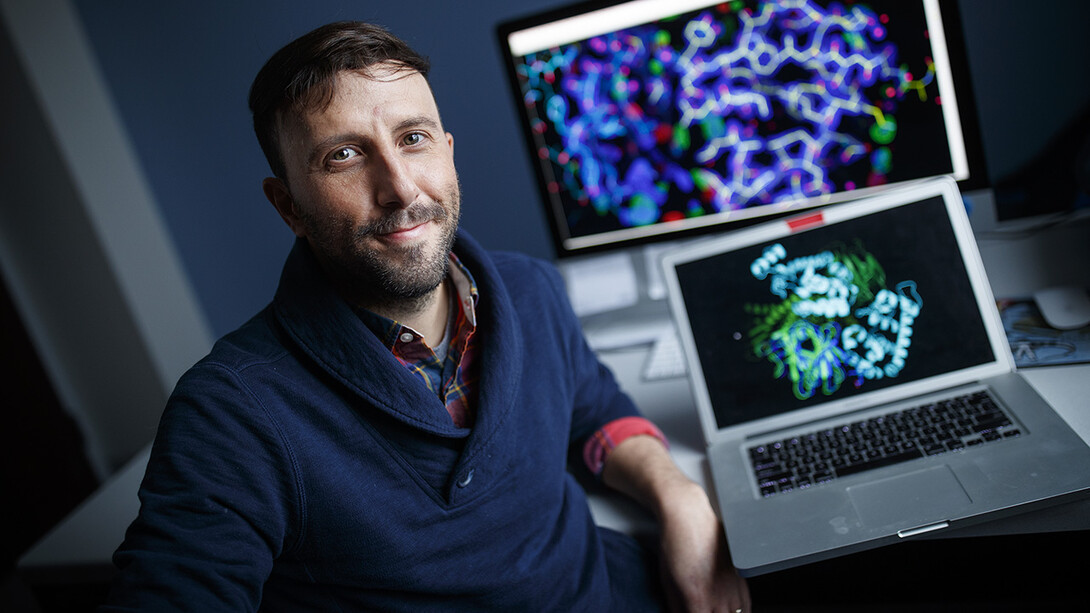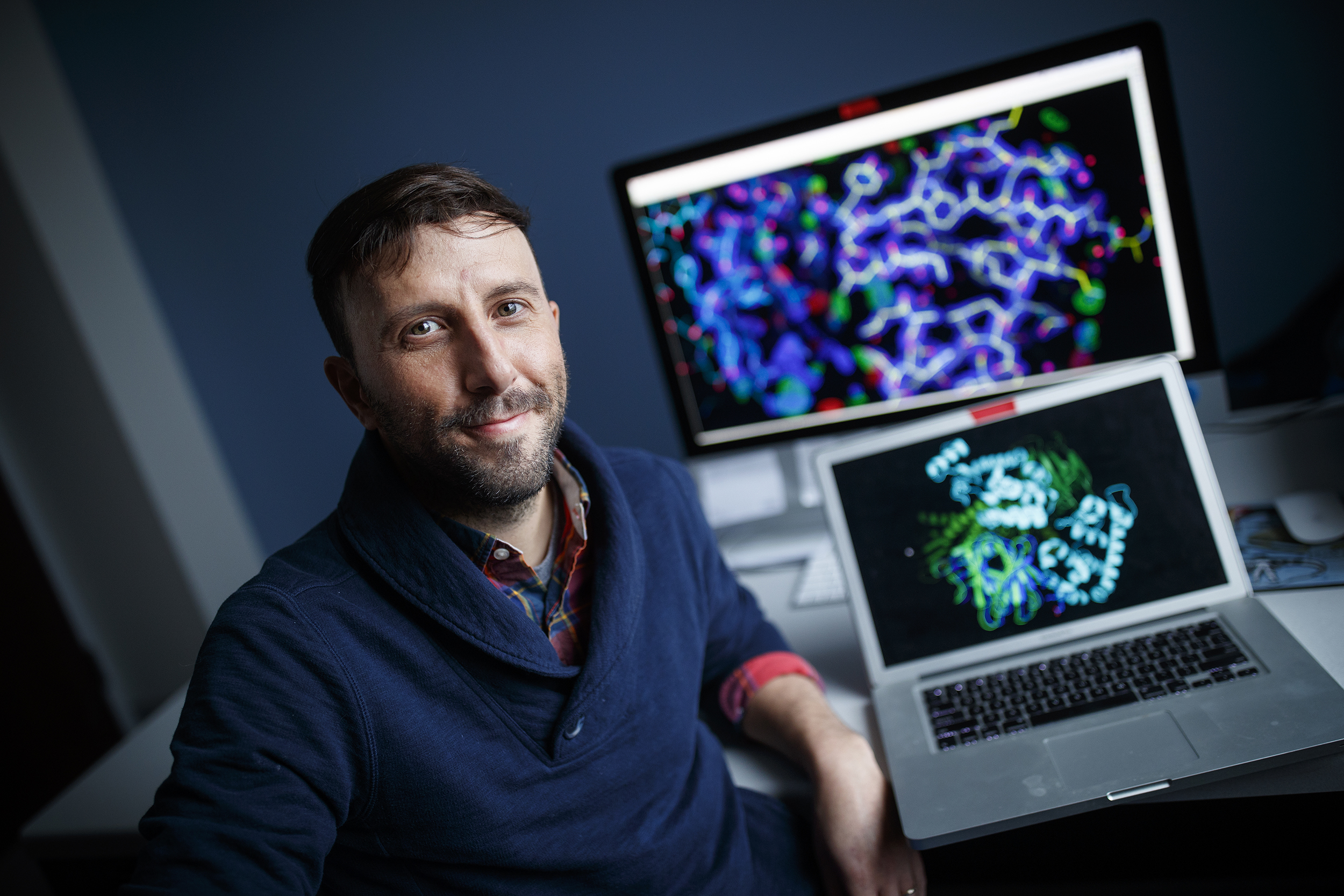
A team of University of Nebraska–Lincoln biochemists led by Alex Vecchio has earned a five-year, $1.8 million Maximizing Investigators’ Research Award from the Department of Health and Human Services’ National Institute of General Medical Sciences to understand how the structure and assembly of membrane proteins influence the function and dysfunction of tight junctions.
Epithelial tissues are widespread throughout the human body, covering surfaces, lining cavities and forming organs, glands, skin and limbs. Tightly packed clusters of cells form barriers that help protect these tissues from harmful molecules. Cells pack so tightly in epithelia that even powerful microscopes cannot see the spaces that exist between them. But spaces do exist, representing a potential entry point for disease-causing molecules. Tight junctions act to prevent entry of large or small molecules into the spaces between epithelial cells, fortifying these barriers.
Because microscopes are not powerful enough to view tight junctions, Vecchio’s team aims to better understand their form and function by visualizing the three-dimensional structures of the membrane proteins that constitute them. These proteins are unique and have been engineered by nature to perform this specific function. By visualizing their 3D structures — using the tools of structural biology — the researchers can begin to piece together how these proteins work individually and in larger assemblies. Using knowledge of biochemistry and biophysics, the researchers can decipher how the protein’s structure determines its function, which then allows them to generate new concepts on how tight junctions form normally and how these processes may be disabled in certain diseases. Tight junction dysfunction contributes to disorders such as cancer, Alzheimer’s disease, Parkinson’s disease, stroke, food poisoning, hepatitis C and diseases of the ears, eyes, gut, heart, kidney and skin. The researchers aim to uncover how tight junction proteins assemble, disassemble and reassemble at the atomic and molecular levels in order to better resolve their form and function at the level of cells and tissues.
“We are particularly excited by this award because of its mechanism,” said Vecchio, assistant professor of biochemistry. “Structural biology of human membrane proteins is technically challenging, thus inherently risky. The MIRA gives us the freedom to perform both very focused and exploratory research, enabling us to investigate established and exciting new avenues of inquiry. The award will significantly enhance our program by providing us with the stability and flexibility necessary to make key breakthroughs. We hope that these fundamental discoveries can be used by researchers in other fields to help design new therapies and strategies to treat some of the many human diseases caused by dysfunction of tight junctions.”
The Nebraska Center for Integrated Biomolecular Communication, a National Institutes of Health-funded center at Nebraska, provided initial funding for the research.
Vecchio’s team includes undergraduate and graduate students from the Department of Biochemistry, research technologist Peter Madzelan, and postdoctoral associates Sewwandi Rathnayake and Sourav Roy. His team also collaborates with faculty at Nebraska, the University of Nebraska Medical Center, Alma College, Michigan State University and the University of Chicago.








